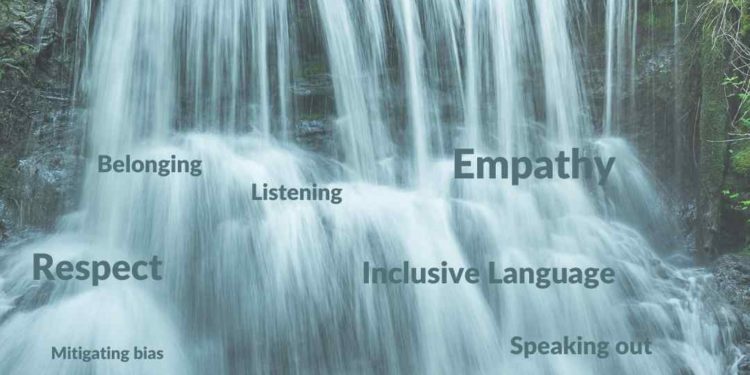Last week, I wrote about the importance of understanding the specific reasons why your company may wish to embark on its EDI journey. This understanding comes from clearly seeing the benefits EDI offers to your specific business, and how it props up and supports the business mission and vision.
Today I want to offer you a few thoughts on how you might go about cascading those reasons throughout the hierarchy of the organisation, with the aim of raising awareness and building momentum in favour of the proposed EDI transition.
Many leaders underestimate the importance of speaking about EDI to their work colleagues. Of course, as soon as they think about it, it makes perfect sense for them to lead the EDI conversation. After all, we’re talking about culture change, and when it comes to setting the tone for work culture, a leader’s whisper becomes a shout. So the more they talk about how important they think EDI is to the business, the quicker they will be able to bring about a real change in culture.
Tips for Raising Awareness
Here are three tips on how to successfully communicate your EDI intentions throughout the organisation:
1. Know your message
- Why is EDI important to the business?
- What are the benefits to the business and the people in it?
- What are some of the prospective challenges?
- How long will it take?
- How urgent a priority is it?
- To what extent will it impact the business and the people in it?
- How will it be introduced?
- What’s expected from everyone?
When EDI messages are being cascaded through management teams, it’s quite easy to veer off message and include individual interpretations. To avoid this, each person relaying the information should be as well versed as the senior leaders in the corporate message and the likely questions and answers. This reinforcement of the same messaging, even when it’s being questioned, will amplify its impact and ensure that the leadership and management teams speak with one voice.
While EDI may make sense on a general level for the business, it’s important to relate it directly to the people being asked to engage with it. It’s highly likely that each person will need to adapt the way they see others and the way they treat each other. In order to ensure each person is motivated in the right way, they will need to hear the ‘what’s in it for them’ reason for the change.
Here are some of the points that help bring EDI home to others:
- Benefit to your job/role: identify the specific benefits that EDI offers to your department
- Teamwork: embracing EDI will have a positive impact on team performance, likely to lead to a win-win result
- It matters to your stakeholders: show how those benefitting from your job/role will benefit from the changes, or even how they might insist on them
- Go with the majority flow: show how others on the team/in the department are embracing the changes
- Your reputation: when it comes to embracing EDI, how do you want to be seen by others?
- Don’t be a laggard: what might happen to your role/team/department if you do nothing?
Of course, when we’re talking about the EDI transition, we’re talking about change in our work culture, and that type of change requires consistency, collaboration and consensus. It requires a strong leadership team that can effectively raise awareness to help drive the change.
That said, it is also important to remember that we can’t rely solely on conveying the message. It takes hard work to embed a culture change, with repeated messaging and consistent behaviours. The messages conveyed will need to be repeated, reinforced, and supported until such point that every person in the company understands the what and the why, including what is expected of them as individuals.


